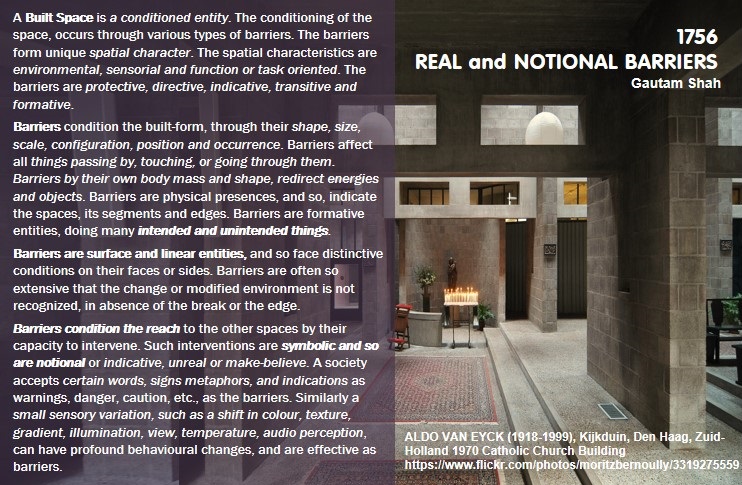1756 REAL and NOTIONAL BARRIERS -Gautam Shah
A Built Space is a conditioned entity. The conditioning of the space, occurs through various types of barriers. The barriers form unique spatial character. The spatial characteristics are environmental, sensorial and function or task oriented. The barriers are protective, directive, indicative, transitive and formative.
Barriers condition the built-form, through their shape, size, scale, configuration, position and occurrence. Barriers affect all things passing by, touching, or going through them. Barriers by their own body mass and shape, redirect energies and objects. Barriers are physical presences, and so, indicate the spaces, its segments and edges. Barriers are formative entities, doing many intended and unintended things.
Barriers are surface and linear entities, and so face distinctive conditions on their faces or sides. Barriers are often so extensive that the change or modified environment is not recognized, in absence of the break or the edge.
Barriers condition the reach to the other spaces by their capacity to intervene. Such interventions are symbolic and so are notional or indicative, unreal or make-believe. A society accepts certain words, signs metaphors, and indications as warnings, danger, caution, etc., as the barriers. Similarly a small sensory variation, such as a shift in colour, texture, gradient, illumination, view, temperature, audio perception, can have profound behavioural changes, and are effective as barriers.
